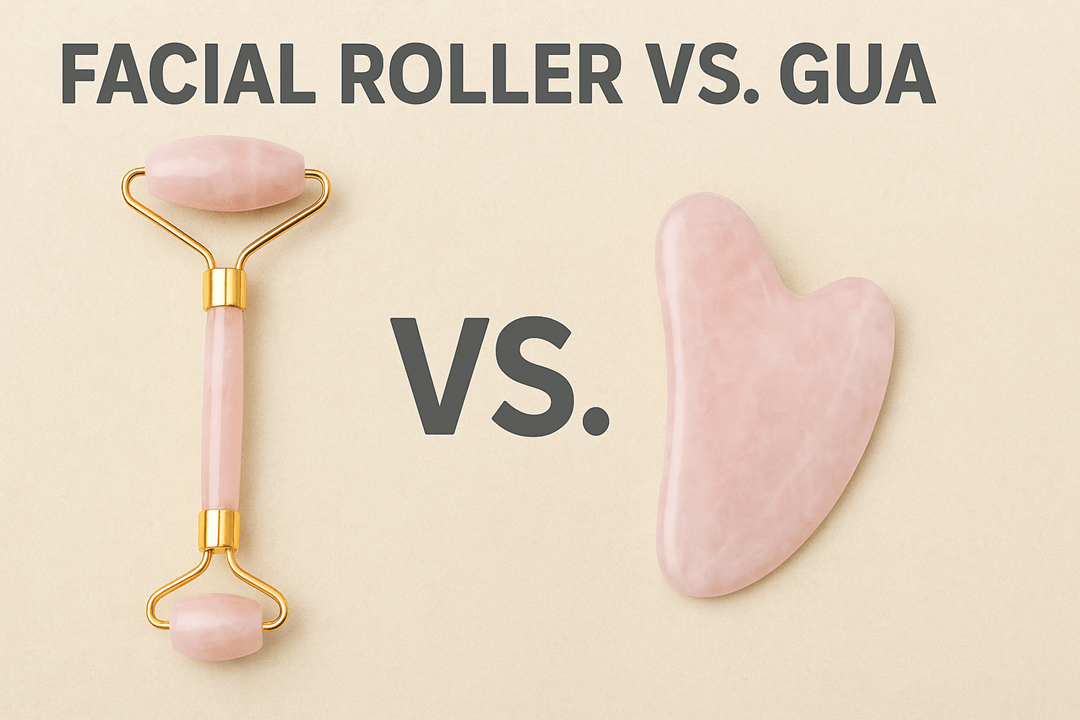
In recent years, facial roller and gua sha tools have become two of the most talked-about skincare accessories. From influencer tutorials to trending TikTok videos, both have been praised for promises such as “slimming the face,” “lifting,” and “de-puffing.” But are these claims really supported by science?
Until recently, most answers came from personal experience or traditional practices. However, a new randomized controlled trial published in the Journal of Cosmetic Dermatology provides fresh scientific insights. The study compared the effects of facial rollers and gua sha over eight weeks, measuring changes in facial contour, muscle tension, and skin elasticity. The results reveal that both tools work—but in different ways.
I. Study Overview
Researchers recruited healthy adult women and divided them into two groups: one used a facial roller, the other a gua sha tool. Each participant followed the same protocol:
-
Frequency: 5 sessions per week
-
Duration: 10 minutes per session
-
Period: 8 weeks
-
Method: Always applied with a facial oil/serum to ensure smooth gliding
Measurements were taken before and after the study to assess facial contour, elasticity, and muscle tone.
II. Key Findings: Facial Roller vs. Gua Sha
1. Shared Benefits
-
Improved facial contour: Both tools helped reduce puffiness and created a more defined appearance.
-
Enhanced circulation: Gentle stimulation boosted blood flow, leaving the skin looking healthier.
2. Distinct Results
-
Facial roller: Showed greater improvement in skin elasticity, making the skin firmer and more resilient.
-
Gua sha: Was more effective in reducing muscle tension, offering stronger relaxation benefits.
3. Different Mechanisms
-
Facial Roller: Works through gentle pressure and lymphatic drainage, stimulating collagen and supporting skin firmness.
-
Gua sha: Applies deeper scraping and stretching, targeting fascia and muscles, releasing tightness and stiffness.
III. Practical Guidance
1. Choosing the Right Tool
-
For skin elasticity and anti-aging benefits → choose a facial roller.
-
For jaw tension, puffiness, or defined jawline goals → gua sha may work better.
-
For comprehensive care, both tools can be integrated into a skincare routine.
2. Best Practices
-
Always use a lubricant such as oil or serum—never drag tools on dry skin.
-
Moderate pressure: rollers should feel soothing; gua sha should apply firm but comfortable pressure.
-
Correct direction: move upward and outward to encourage lymphatic drainage.
-
Keep tools clean: wash after each use to prevent bacterial buildup.
IV. Trends and Future Directions
The beauty market is rapidly innovating, bringing high-tech twists to these traditional tools:
-
LED gua sha boards combining red or blue light therapy
-
Vibrating rollers that enhance massage effects
-
Hot/cold adjustable tools for circulation and relaxation
While exciting, these upgrades still require more research to confirm their effectiveness. Future studies may explore:
-
Long-term results across different age groups
-
Safety for sensitive or acne-prone skin
-
Whether tool material (quartz, stainless steel, alloys) influences outcomes
Conclusion
Facial rollers and gua sha are not competitors but complementary tools.
-
Facial Roller are better for improving elasticity and maintaining youthful skin.
-
Gua sha excels at muscle relaxation and reducing puffiness.
Backed by scientific evidence, users can now choose based on their personal goals rather than hype. With proper technique and consistency, both methods can become effective allies in daily skincare.

